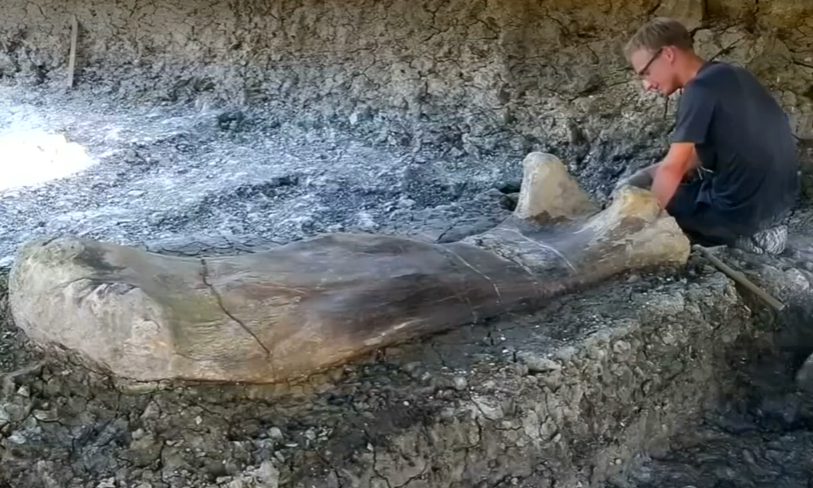Paleontologists can spend years to decades in one single territory where millions of years old findings are expected. French paleontologists have discovered the giant bone of a dinosaur that lived 140 million years ago. The 2-meter-long femur weighs 500 kilos and belongs to a herbivorous animal that lived in the late Jurassic period.
“This is a major discovery,” Ronan Allain, a paleontologist at the National History Museum of Paris told Reuters. “I was especially amazed by the state of preservation of that femur.”
Prehistoric Giant
Researchers assume that the discovered femur was a long-necked herbivore with a long tail called sauropod, which lived in the late Jurassic period, about 140 million years ago.
“These are animals that probably weighed 40 to 50 tonnes,” added Allain.

This great finding was discovered by scientists in the Angeac-Charente area near Cognak in southwestern France. There have been excavations in this area since 2010.
Southwestern French Site
So far, more than 7,500 fossils from more than 40 different species of prehistoric animals have been found in the mentioned area. It is one of the largest finds of prehistoric fossils in Europe.
Most often in the site near Agneac, bones of predatory dinosaurs are found with a body length of about 9 meters. In addition to dinosaur bones, paleontologists have discovered the remains of water turtles, several crocodile species, fossilized wood, plant leaves and seeds.

These findings make it possible to outline how the dinosaurs lived. The work of paleontologists on excavations is the gradual revealing of the mysteries of life on Earth hundreds of millions of years ago.
Source and crdit: https://www.reuters.com/article/us-france-dinosa, https://en.wikipedia.org/wiki/Sauropoda















